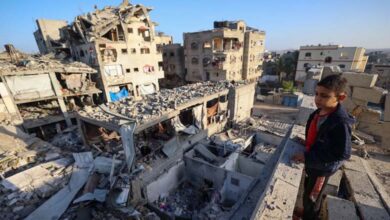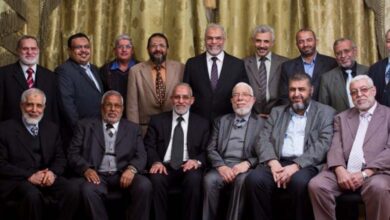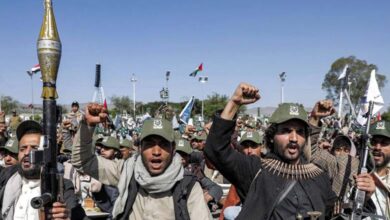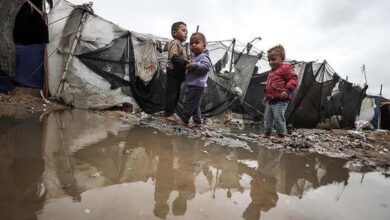Sharp disagreements among Hamas leaders over prisoner exchange deal
Sinwar Ready to Accept Initial Six-Week Ceasefire While Political Leadership in Exile Demands More Concessions
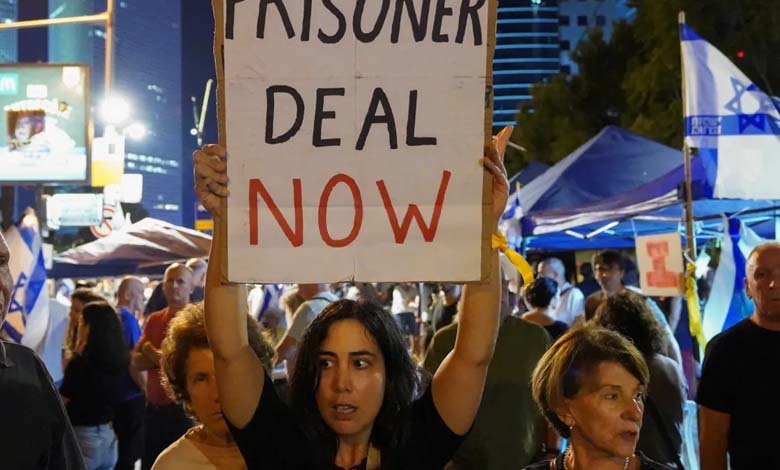
According to informed sources on the negotiations regarding the prisoner exchange deal and ceasefire in the Gaza Strip, the Wall Street Journal revealed on Friday that disagreements among Hamas leaders are hindering the talks.
The report confirms that Hamas leader in Gaza, Yahya Sinwar, is now willing to accept an initial six-week ceasefire. On the other hand, the political leadership of Hamas living in exile demands more concessions and seeks to negotiate a permanent ceasefire.
Previous reports had discussed disagreements among Hamas leaders following the extensive Israeli attacks following the October 7th operation.
On the ground, the city of Rafah, where millions of Palestinians have sought refuge from the intensified Israeli strikes, witnessed heavy bombardment on Saturday as diplomatic efforts continue to reach a new ceasefire amid escalating tensions in the region. Late at night, journalists reported hearing powerful explosions in this city adjacent to the Egyptian border in the southernmost part of the Gaza Strip.
Hamas‘s Health Ministry announced the deaths of at least 100 civilians overnight, including 14 in the early hours of Saturday in strikes targeting residential buildings.
In recent weeks, Israeli operations have focused on the neighboring city of Khan Younis, the second largest city in the Gaza Strip, where, according to the Israeli army, the local leadership of the Islamic Resistance Movement (Hamas) is concentrated.
Under the rain, thousands of residents continued to flee the ongoing battles and Israeli bombardment in cars, on bicycles, or in carts pulled by donkeys, or even on foot.
Displaced people seek shelter in Rafah, where 1.3 million people out of an estimated total population of 2.4 million have moved, vulnerable in the harsh winter to hunger and epidemics, according to the United Nations.
As battles continue unabated, diplomatic efforts intensify to reach a second ceasefire longer than the one-week ceasefire mediated by Qatar, Egypt, and the United States, allowing the release of around 100 Israeli hostages in late November in exchange for Israel releasing Palestinian prisoners from its jails.
Ismail Haniyeh, head of the political bureau of the Islamic Movement residing in Qatar, is expected to visit Egypt again to discuss a proposal prepared during a meeting in late January in Paris between CIA Director William Burns and Egyptian, Israeli, and Qatari officials.
A source in the movement stated that the proposal includes three stages, with the first stage involving a ceasefire lasting six weeks during which Israel releases between 200 and 300 Palestinian prisoners in exchange for the release of 35 to 40 hostages held in Gaza, with the entry of 200 to 300 aid trucks daily into Gaza.
In recent days, Qatar has revealed a “preliminary positive confirmation from Hamas” to support the ceasefire. However, the movement later stated that it has not made any decision regarding the proposal, as it supports a cessation of hostilities rather than a new ceasefire.
Meanwhile, “the Israeli side (has) agreed to this proposal,” according to Majed al-Ansari, spokesperson for Qatar’s Foreign Ministry, which is involved in the mediation.
However, Israel insists that it will not permanently stop its war on Gaza until “eliminating” Hamas and freeing all hostages, receiving assurances about security within its territories.
The war in the Gaza Strip erupted following an unprecedented Hamas attack on Israel on October 7th, resulting in the deaths of over 1,160 people, most of them civilians, according to a count by Agence France-Presse based on the latest official Israeli figures.
In response to the attack, Israel pledged to eliminate the movement, and has since carried out a devastating air campaign followed by ground operations since October 27th, resulting in the deaths of 27,131 people, most of them women and children, according to Hamas‘s Health Ministry.
About 250 people were kidnapped during the Hamas attack and transferred to the Gaza Strip, according to Israeli authorities. 132 of them are still being held hostage, with the Israeli army announcing that 27 of them have died.
This ceasefire proposal comes at the heart of a new visit by US Secretary of State Antony Blinken to the region starting Sunday, with stops in Qatar, Egypt, Israel, the occupied West Bank, and Saudi Arabia.
It will push forward a proposal to release Israeli hostages held in Gaza in exchange for a suspension of Israeli attacks on the Strip, according to the US State Department announced on Friday.
Blinken stated on Friday evening that during this tour, he seeks to work towards “a lasting peace in the region, including sustainable security for both Israelis and Palestinians.”
This will be the fifth time Blinken has visited the region since the outbreak of the war between Israel and Hamas following the attack by the Islamic resistance movement on the Jewish state.



